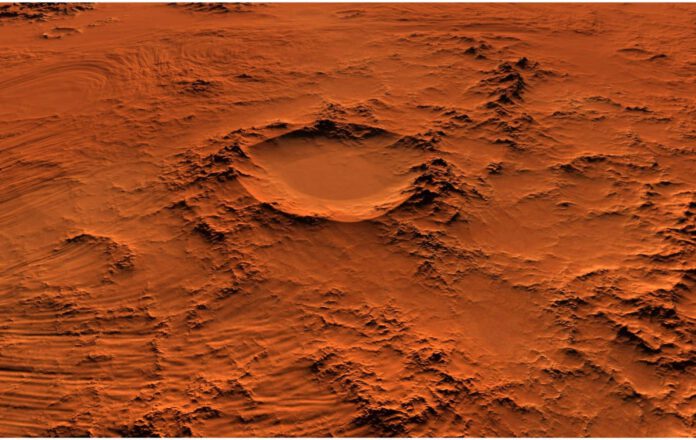
New Insights into Mars Crust and Mantle Composition
We recently gained a lot more knowledge about the composition of the mantle and crust of our neighboring planet, Mars. This advancement is thanks to American scientists who have analyzed several Martian meteorites using the latest techniques. According to their findings, several pieces of the puzzle are now falling into place.
The analyzed meteorites were formed approximately 1.3 billion years ago due to impacts on the red planet. These impacts caused fragments to break off Mars and embark on a relatively modest space journey before crashing on Earth. These fragments have been discovered over the past few decades at various locations in Africa and Antarctica. Geologist James Day from the University of California (UC) and his team have been able to analyze the chemical composition of these Martian samples.
Data is Invaluable
The results are not only vital for understanding the formation and evolution of Mars but are also invaluable for NASA missions to the red planet, explains study leader Day. “Martian meteorites are the only physical material we have from Mars. They allow us to conduct precise measurements and uncover the processes that took place on Mars and close to its surface. They provide us with direct information about Mars’ composition that we can compare with observations made on Mars itself,” Day elaborates.
The formation of Mars could be studied through meteorite samples that all originated from the same volcano. These meteorites are known as nakhlites and chassignites. About 11 million years ago, a significant meteor impact on Mars ejected parts of the planet, sending numerous rocks into space. Some of these fell to Earth as meteorites, with the first being discovered in 1815 in Chassigny, France. In 1905, a similar extraterrestrial rock was found in Nakhla, Egypt.
Extraterrestrial Composition
Since then, more of such meteorites have been found in places like Mauritania and Antarctica. Scientists can pinpoint Mars as their place of origin because these meteorites are relatively young. They can only come from a recently active planet. The oxygen element, abundantly present in these meteorites, distinctly differs from earthly material. The atmospheric composition of Mars is largely preserved in these meteorites and matches measurements taken on Mars’ surface by the Viking landers in the 1970s.
Nakhlites and Chassignites
The team analyzed two types of meteorites: nakhlites and chassignites. Nakhlites are basaltic, similar to the lava currently erupting in places like Iceland and Hawaii. Nakhlites are rich in a mineral called clinopyroxene. Chassignites, on the other hand, are almost entirely composed of the mineral olivine. On Earth, basalt is a primary component of the crust, especially beneath the oceans. Olivine is abundant in the Earth’s mantle.
The same applies to Mars. The rocks are related through a unique process in the volcano where they formed. Some of the once-molten nakhlites contain fragments of the upper layer of Mars’ crust. They were so close to the surface that they interacted with the Martian atmosphere. “By determining that nakhlites and chassignites come from the same volcanic system—and that there was interaction with Mars’ crust, which changed through atmospheric interactions—we can identify a new type of rock on Mars,” Day states proudly. “With the existing collection of Martian meteorites, which all have volcanic origins, we are also able to better understand the internal structure of Mars.”
In this way, a picture emerges of an atmospheric-altered upper layer of Mars, a complex deeper crust, and a mantle where plumes—from the deep interior of the planet—penetrate to the bottom of the crust. Meanwhile, Mars’ interior, formed early in its evolution, appears to be liquid. Due to the molten state of the Martian core, the planet can produce specific types of volcanoes.
Fascinating Similarities and Differences
“It is fascinating how much Mars’ volcanism resembles Earth’s,” says Day. “Nakhlites and chassignites have formed in ways similar to recent volcanism in places like Oahu in Hawaii. There, new volcanoes press on the mantle, generating tectonic forces that cause more volcanism in the immediate area.”
“But there are also significant differences between Earth and our red neighbor. Mars’ reservoirs are extremely old and separated from each other shortly after the formation of the red planet. On Earth, plate tectonics has caused reservoirs to merge over time. In that sense, Mars provides an important link between what early Earth may have looked like and its current state.”











